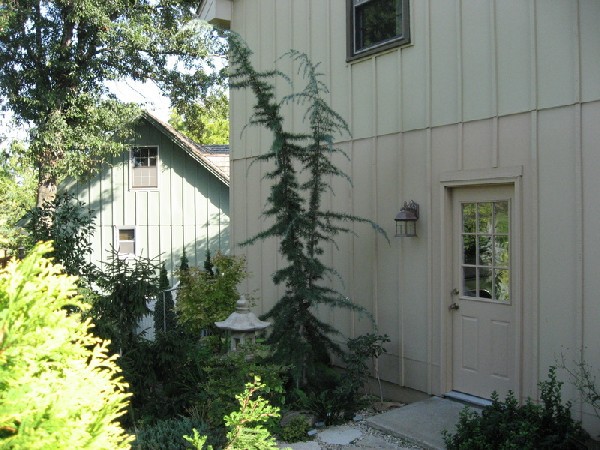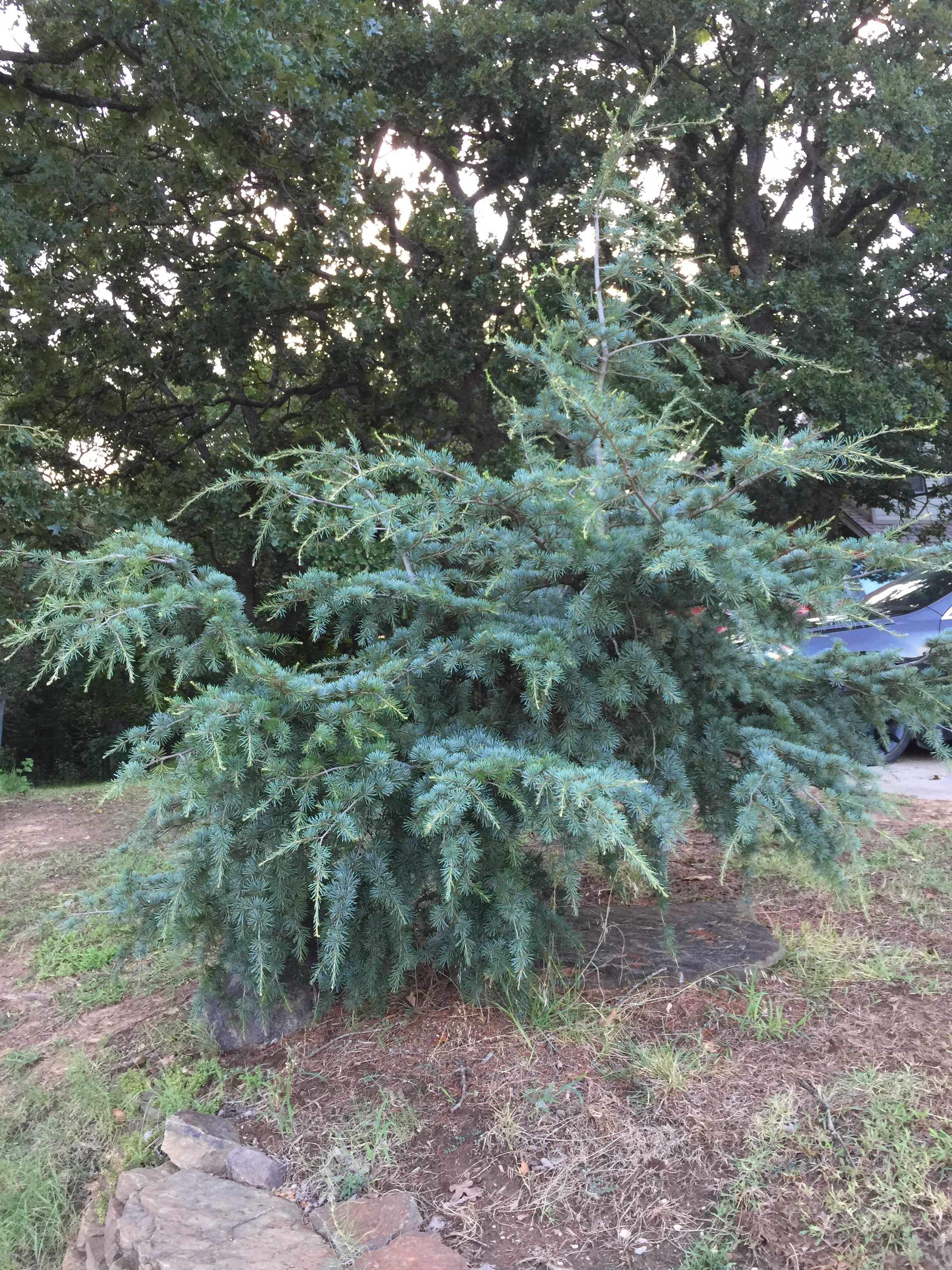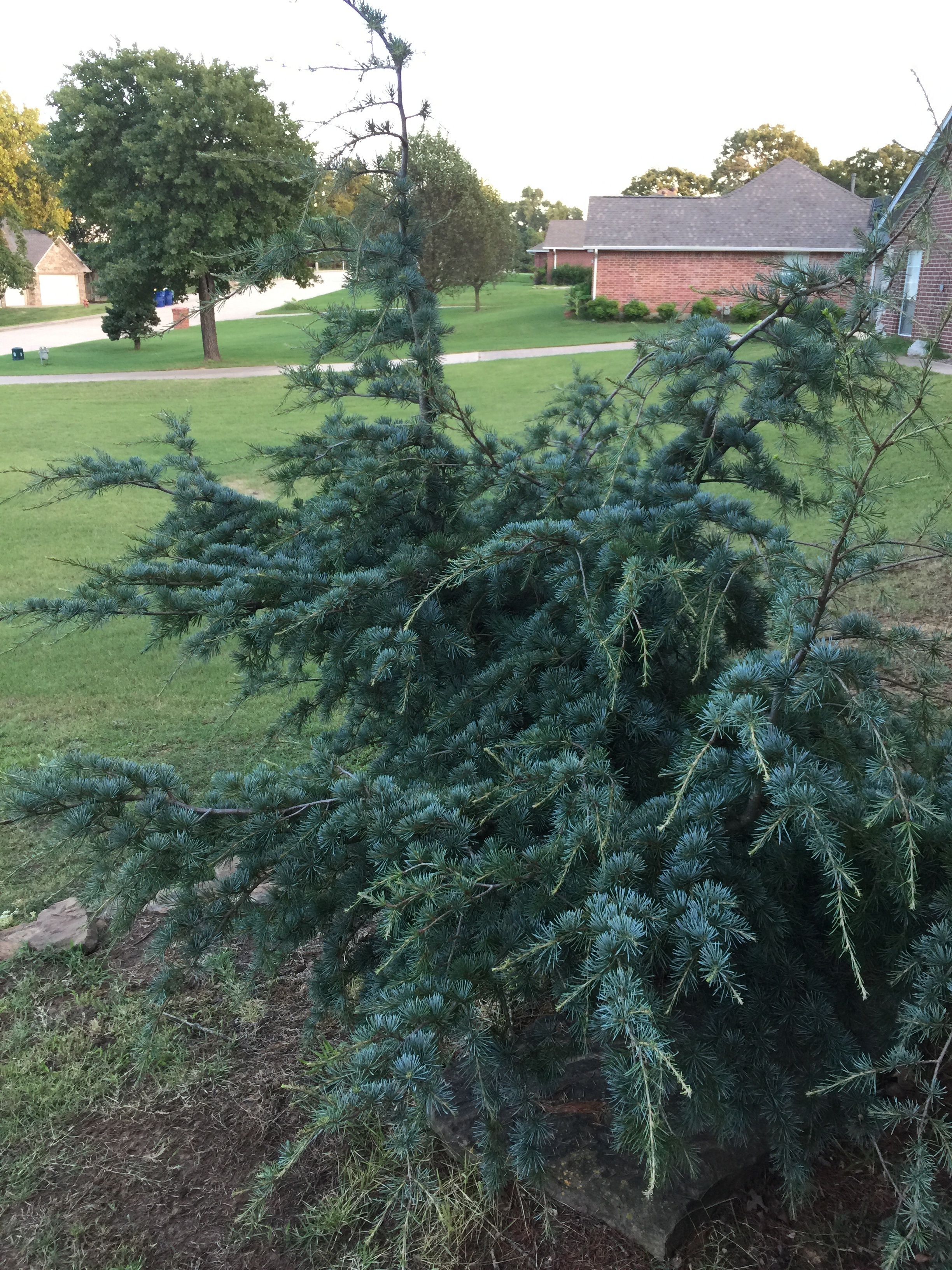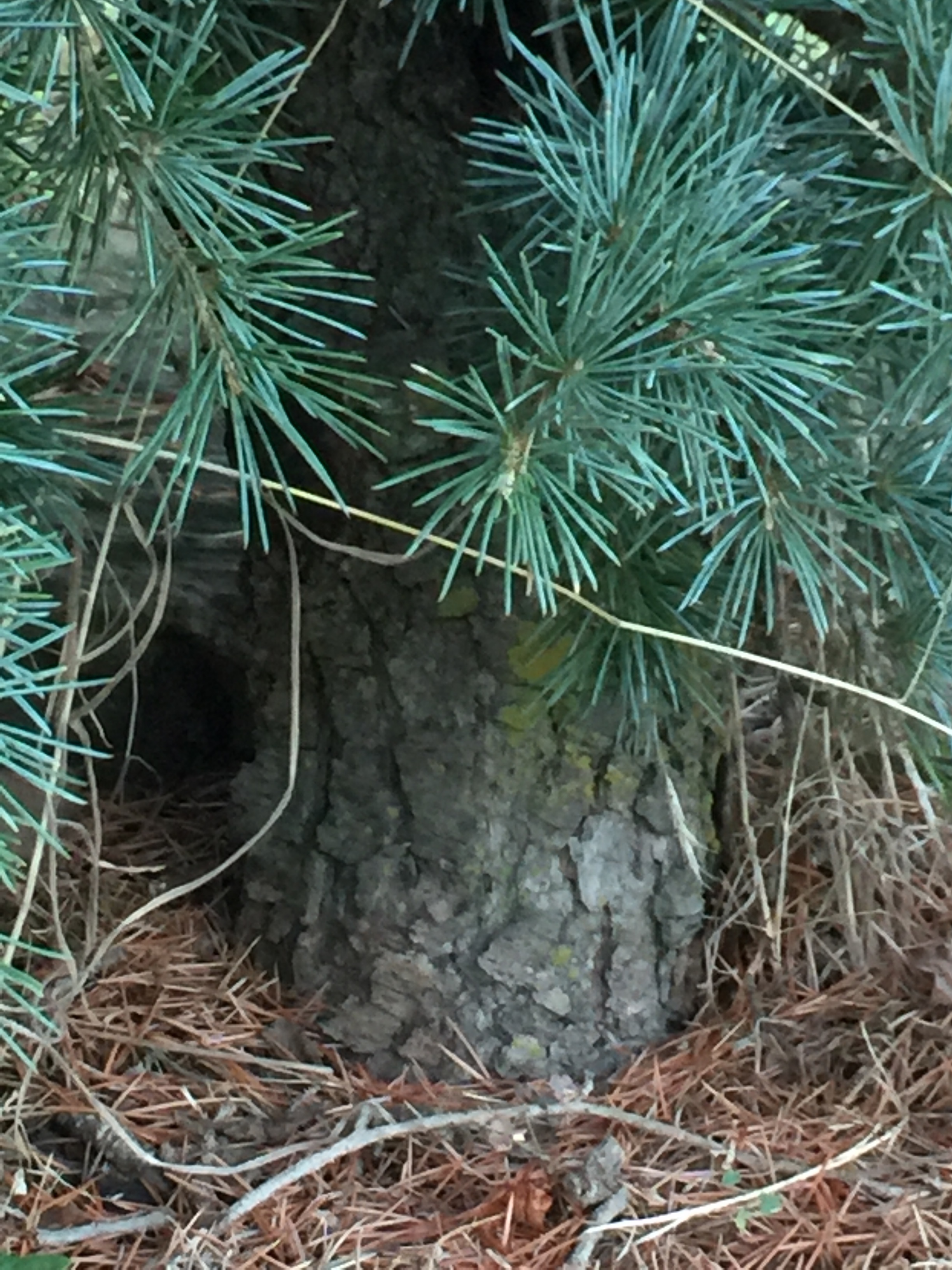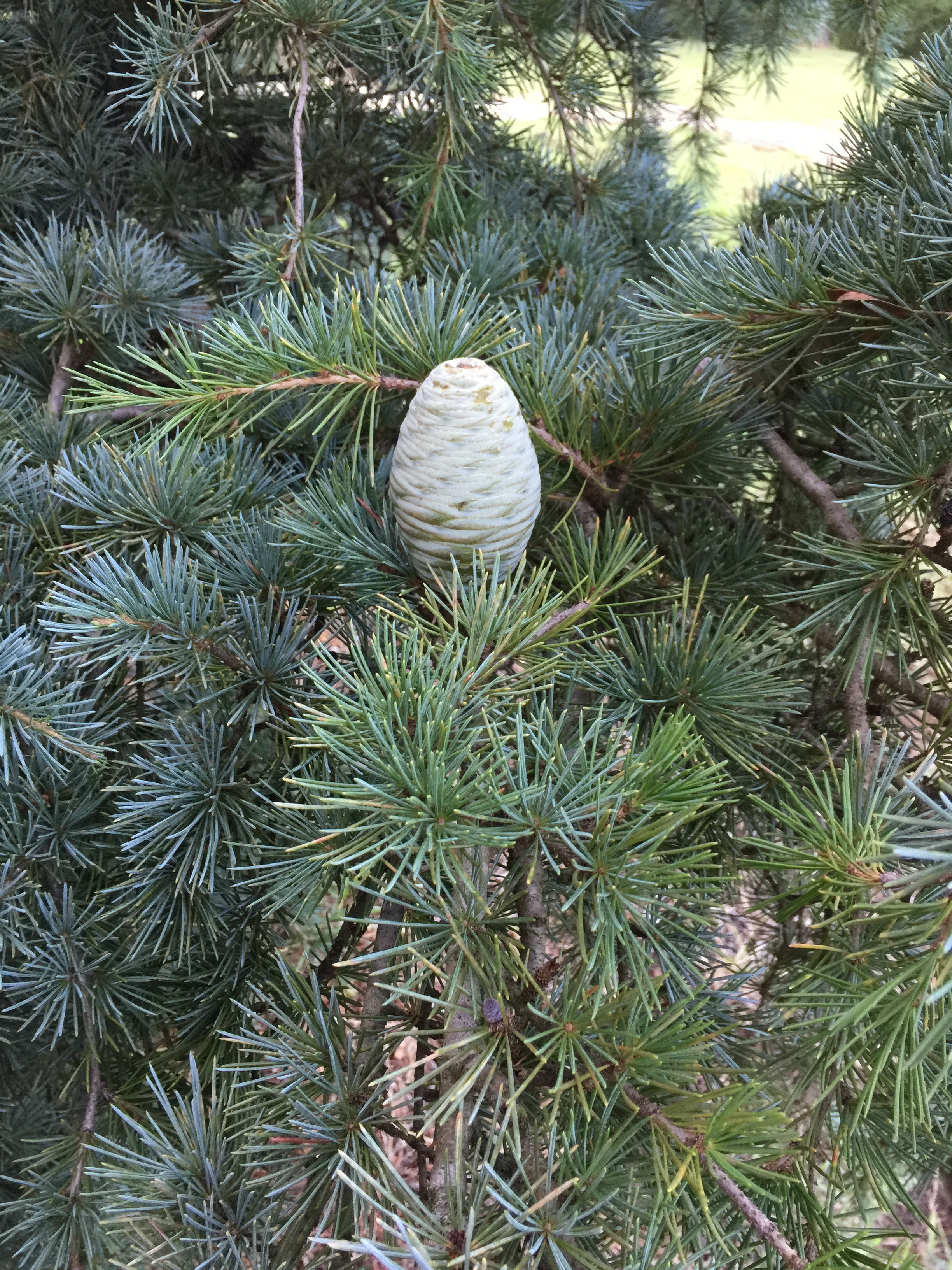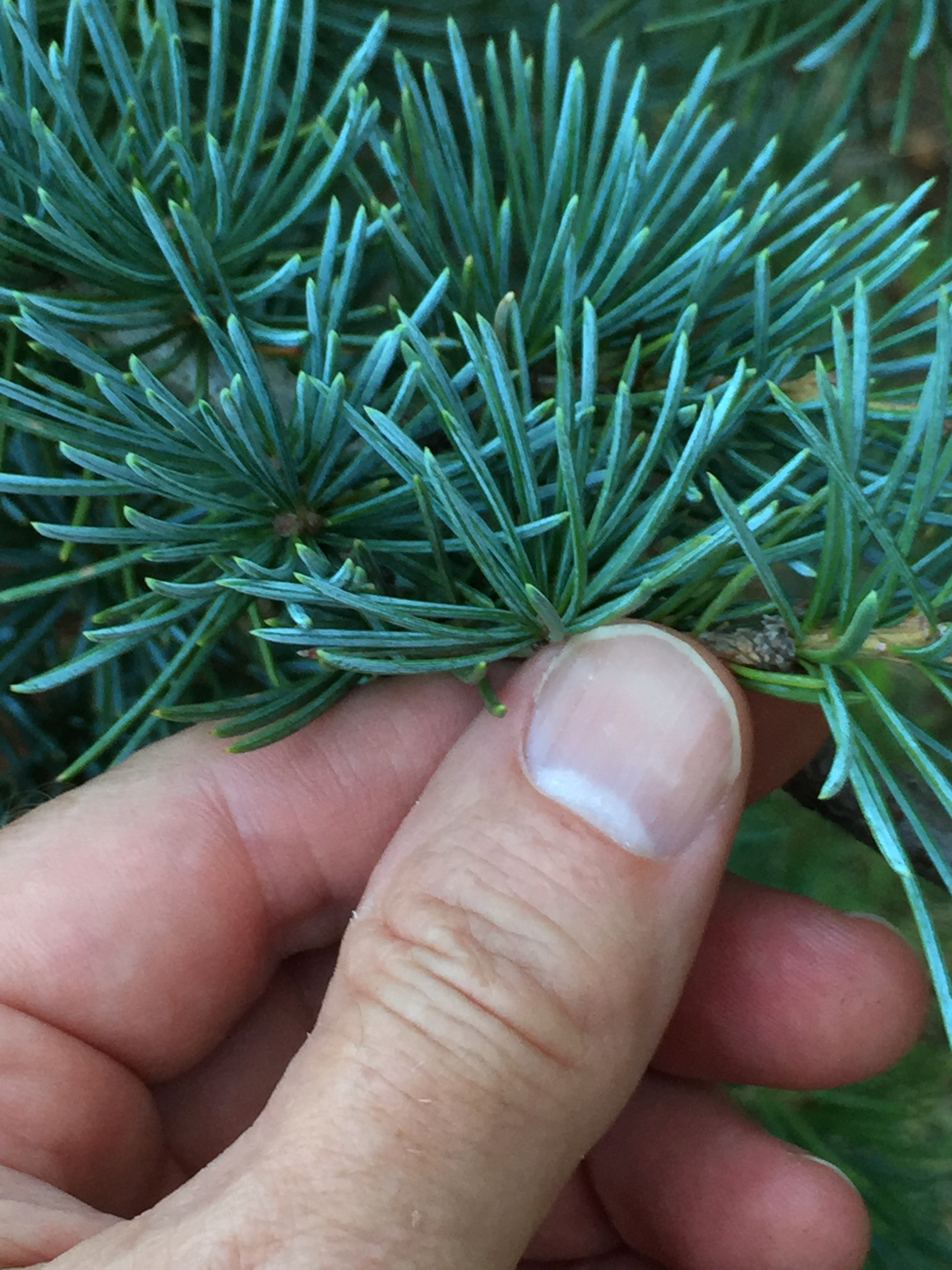Cedrus libani 'Pendula' is a robust, fast growing, upright weeping blue cedar of Lebanon. It has a strongly apically dominant terminal leader, horizontal lateral branches and strictly weeping branchlets. Foliage is exceptionally long and nice, dark, blue-green in color. It is a strikingly unique tree in the landscape.
[ Stanley & Sons Nursery online catalog ] Fast growing main leader upright. Leaves are blue and large needles. All branches come right back down.
After 10 years of growth, a mature specimen will measure 12 feet (4 m) tall and 8 feet (2.5 m) wide, an annual growth rate exceeding 12 inches (30 cm).
This cultivar originated as a seedling selected in the mid-1850s in the United Kingdom. More than one clone is implicated as the mother plant, implying a degree of variability in plants that one will see in the nursery trade. A great deal of nomenclatural confusion surrounds this cultivar. It's sometimes seen listed as Cedrus libani 'Glauca Pendula' which makes it tough to differentiate from the more common and popular Cedrus atlanta 'Glauca Pendula'; and if one were to apply the commonly used synonyms, Cedrus libani subsp. libani 'Glauca Pendula' and Cedrus libani subsp. atlantica 'Glauca Pendula', the risk is absurdity.
